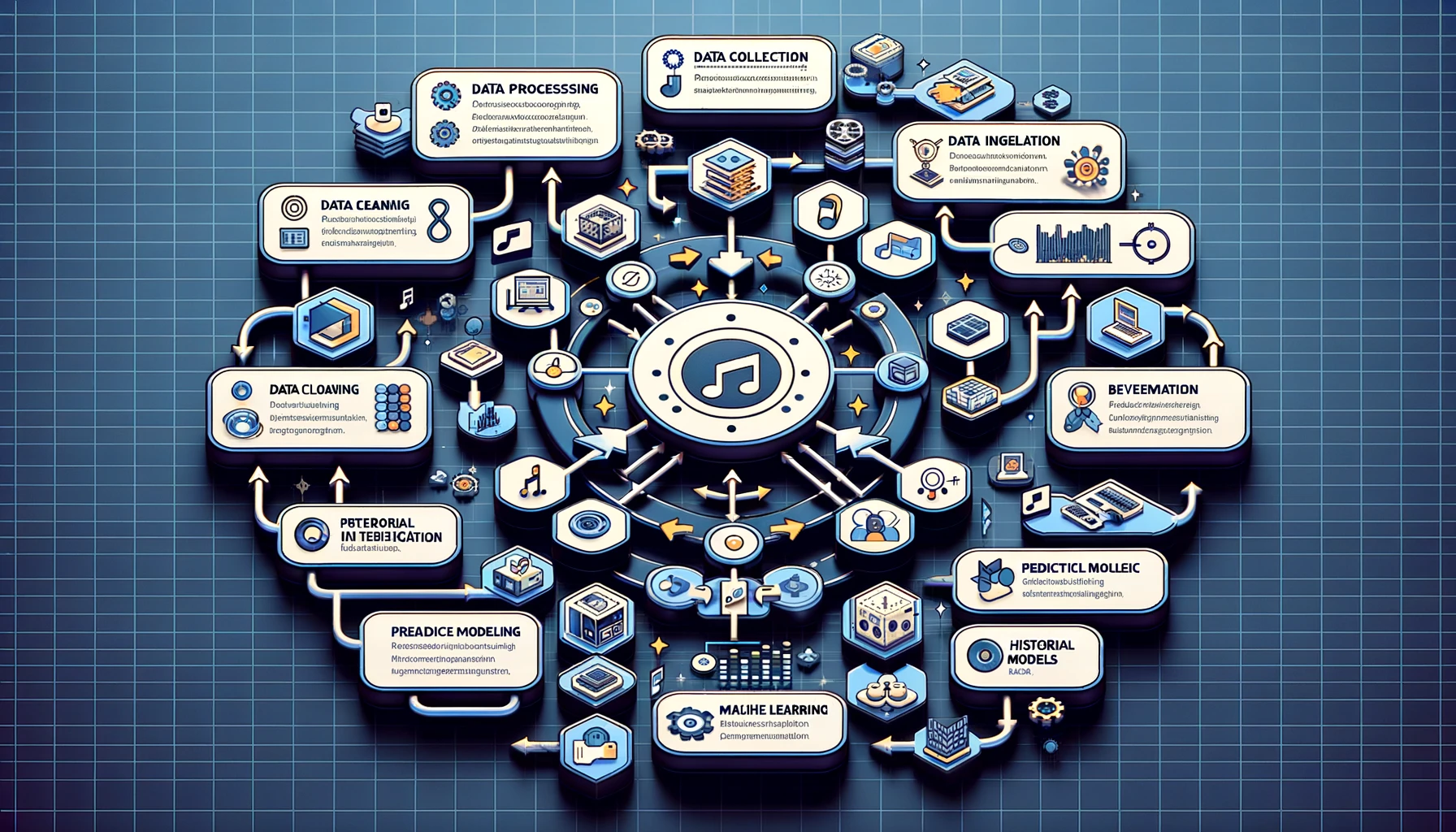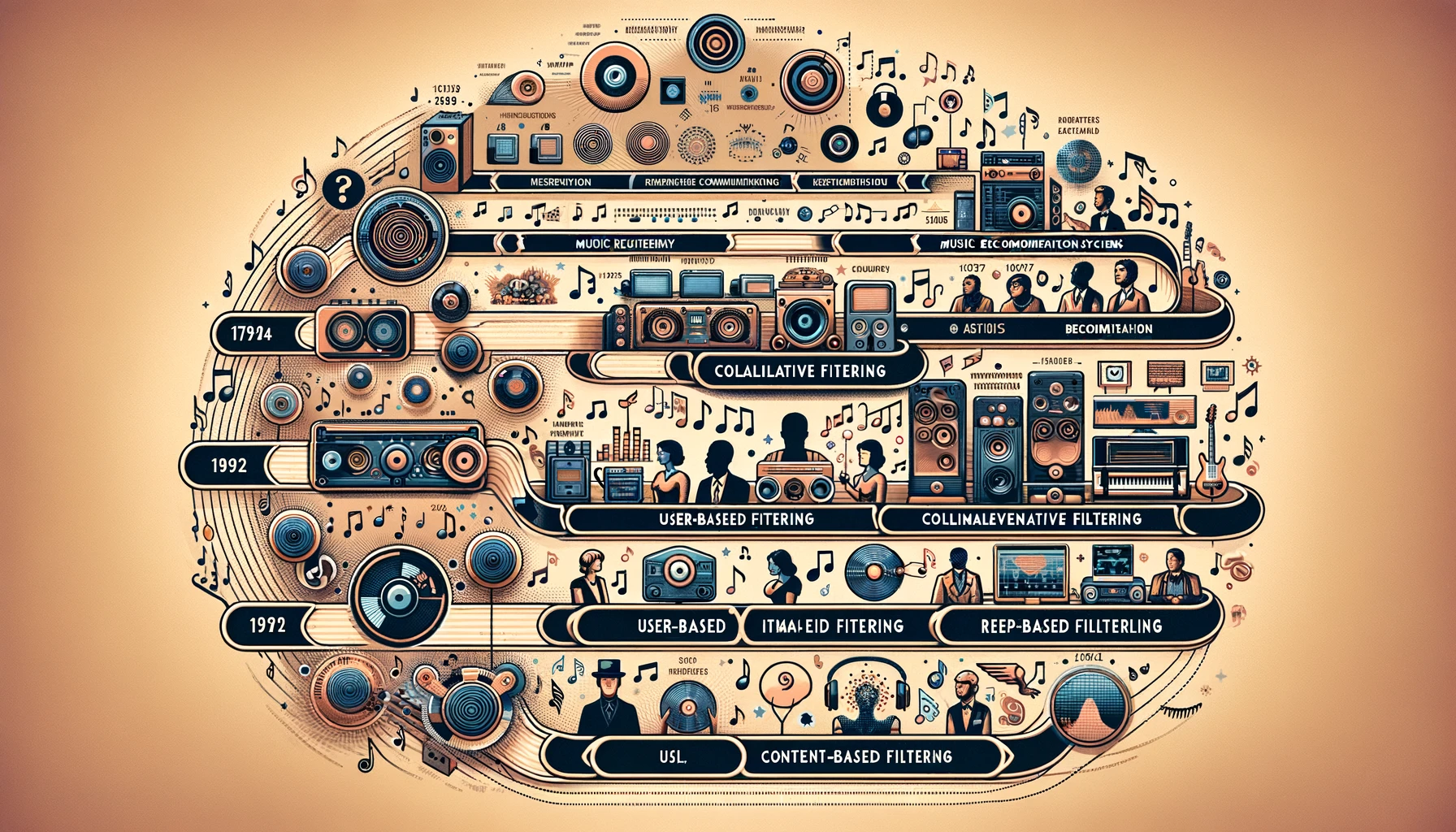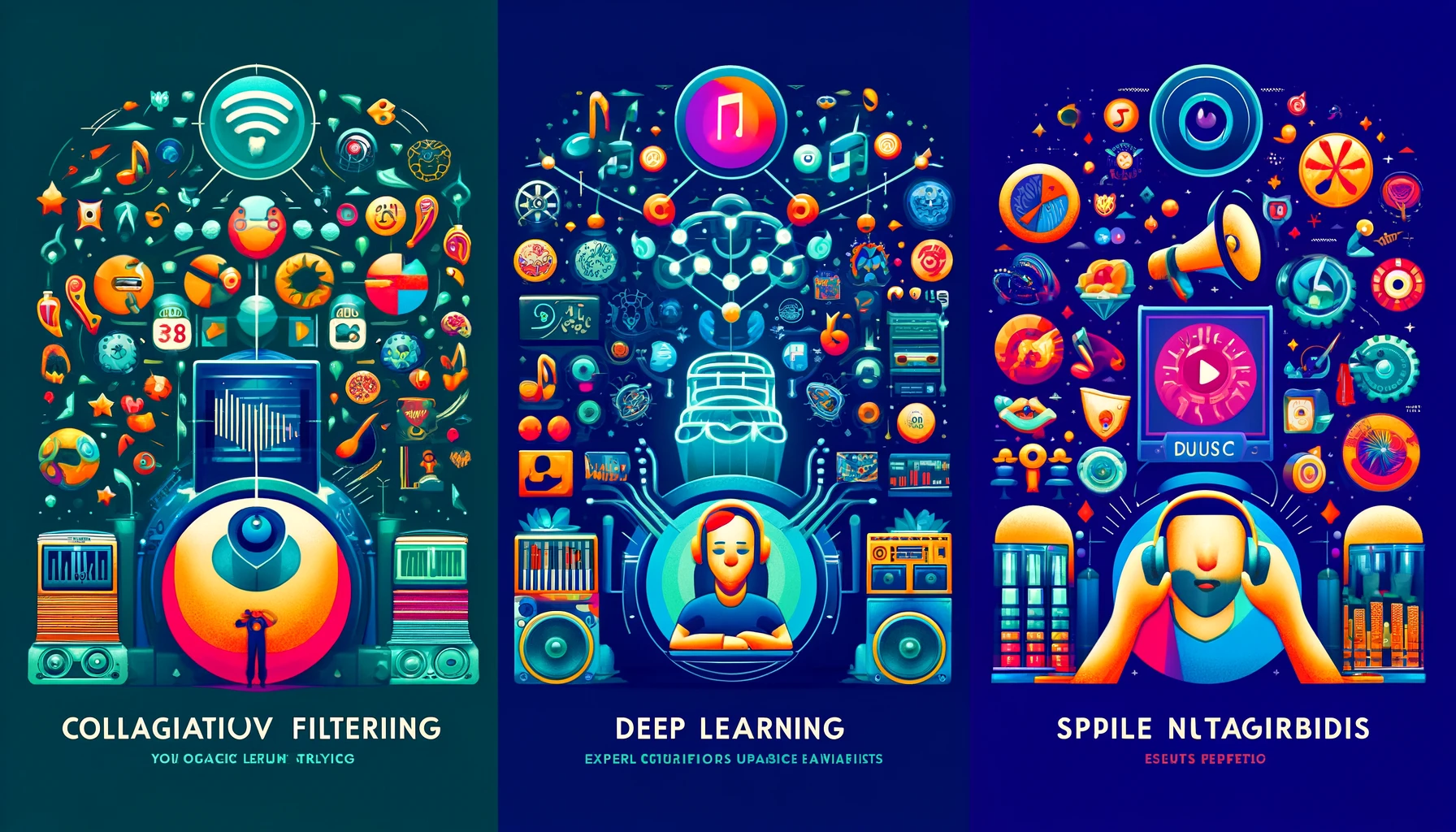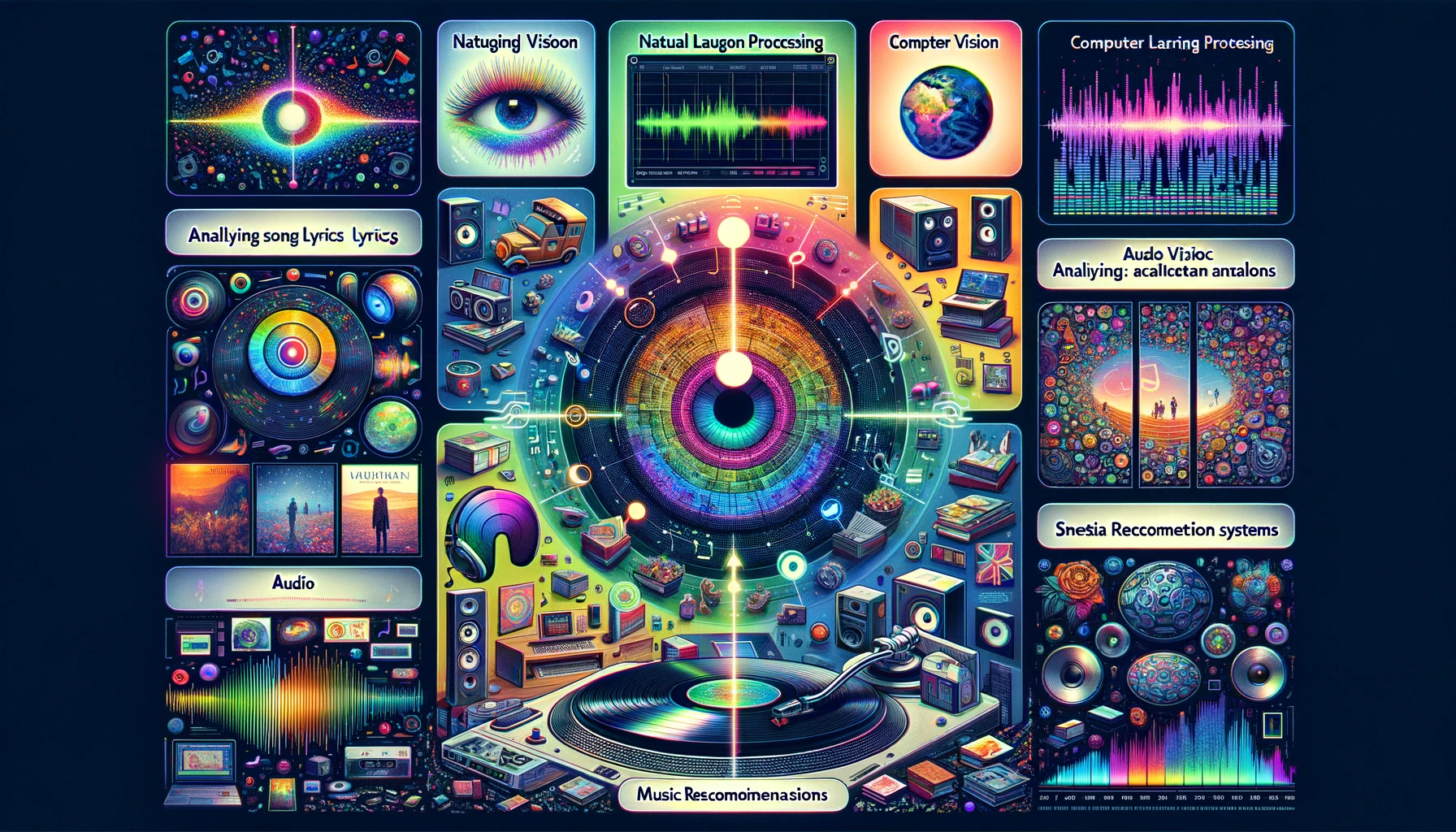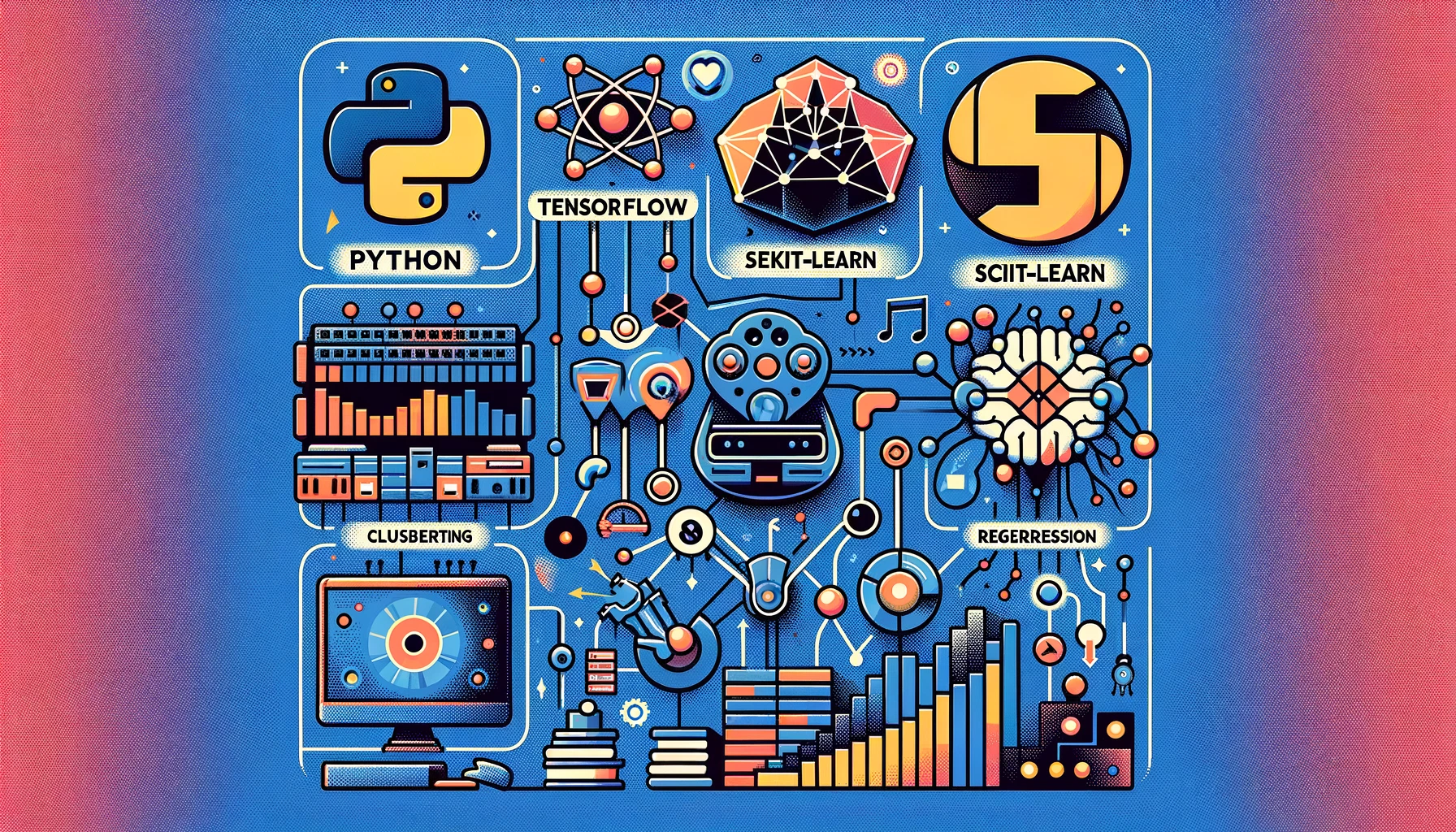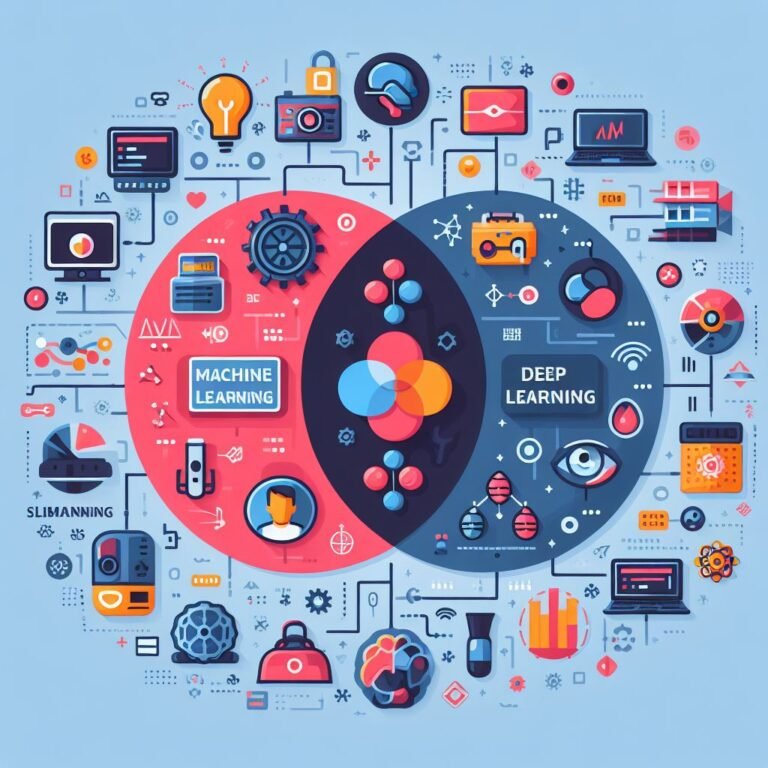Music Recommendation Systems Using ML
Music Recommendation Systems Using ML revolutionize how we engage with music, providing a truly personalized listening experience. These advanced systems utilize machine learning algorithms to analyze user data in relation to songs that resonate with their interests, enhancing the discovery of new music. By examining metrics like listening history, likes, dislikes, and even the time of day music is played, these algorithms can offer song suggestions that closely align with individual preferences. The use of machine learning enables the detection of intricate patterns and preferences, delivering recommendations that feel custom-tailored for each user. This personalized approach not only boosts user satisfaction but also introduces listeners to new music that they might have otherwise overlooked. Furthermore, continuous feedback from users, such as skipping or liking songs, allows these systems to refine and adapt their recommendations, ensuring that future suggestions are even more precise and enjoyable.
Understanding the Basics of Machine Learning in the Context of Music Systems
Machine learning in music recommendation encompasses the following:
- Data Processing: Collect the data and maintain the user data.
- Data Collection: Gathering data from various sources such as user interactions (likes, skips, play counts), social media, and streaming history.
- Data Cleaning: Ensuring the data is free from errors and inconsistencies to improve the accuracy of the recommendations.
- Data Integration: Combining data from different sources to create a comprehensive user profile.
- Pattern Recognition: Recognize patterns of user listening.
- Behavior Analysis: Analyzing user listening habits, such as the time of day they listen to music, preferred genres, and frequently played artists.
- Trend Identification: Identifying emerging trends in user preferences to recommend new and popular songs.
- Clustering: Grouping users with similar listening habits to provide group-based recommendations.
- Predictive Modeling: Predict the user’s future preference behavior.
- Historical Data Analysis: Using past listening data to predict future preferences.
- Machine Learning Models: Employing various models such as collaborative filtering, content-based filtering, and hybrid models to generate predictions.
- Feedback Loop: Continuously refining predictions based on user feedback, such as likes, dislikes, and skips, to enhance recommendation accuracy.
The Evolution of Music Recommendation Systems: A Short History of Music Recommendation Technologies and the Role of AI
Music recommendation systems have come a long way from simple collaborative filtering to now sophisticated AI-driven models. Here’s a brief history of their evolution:
- Collaborative Filtering: Recommends music based on user similarities.
- User-Based Collaborative Filtering: Initially, systems compared the listening habits of users to suggest music enjoyed by similar users. For example, if User A and User B have a high overlap in their music preferences, songs liked by User A that User B hasn’t heard yet would be recommended to User B.
- Item-Based Collaborative Filtering: Later, systems shifted to analyzing the similarities between items (songs, albums) themselves. This method proved more scalable as it focused on the relationship between items rather than users.
- Content-Based Filtering: Uses audio features to suggest similar songs.
- Audio Analysis: Systems analyze the acoustic features of songs, such as tempo, melody, rhythm, and instrumentation, to recommend music that is sonically similar to what the user already enjoys.
- Metadata Utilization: Incorporates additional information such as genre, artist, album, and release year to fine-tune recommendations. For example, if a user frequently listens to indie rock, the system will suggest other songs and artists within that genre.
- Hybrid Systems: Combines multiple approaches for better accuracy.
- Combination of Techniques: Modern recommendation systems blend collaborative and content-based filtering, along with other techniques, to improve accuracy. By leveraging the strengths of each method, these systems can provide more personalized and relevant recommendations.
- Deep Learning Integration: Incorporates advanced machine learning models, such as neural networks, to process vast amounts of data and learn complex patterns. This integration allows for more nuanced recommendations that consider a broader range of factors influencing user preferences.
- Real-Time Adaptation: Uses real-time data to continuously adapt and refine recommendations. This dynamic approach ensures that the recommendations remain relevant as the user’s tastes evolve.
How Machine Learning Powers Modern Music Recommenders: A Deep Dive into Algorithms
Modern music recommenders use several algorithms, including:
- Matrix Factorization: Reduces the dimensionality of user-item interactions.
- Dimensionality Reduction: By breaking down the user-item matrix into lower-dimensional matrices, matrix factorization helps in uncovering latent factors that influence user preferences, making it easier to recommend items based on these hidden patterns.
- Collaborative Filtering: Commonly used in collaborative filtering, matrix factorization methods like Singular Value Decomposition (SVD) and Alternating Least Squares (ALS) improve the scalability and accuracy of recommendations.
- Deep Learning: Employs neural networks to understand complex patterns.
- Neural Networks: Deep learning models, particularly Convolutional Neural Networks (CNNs) and Recurrent Neural Networks (RNNs), are used to analyze various aspects of music, such as audio signals, user behavior, and contextual information, to make more nuanced recommendations.
- Feature Learning: Deep learning allows the system to automatically learn features from raw data, such as extracting meaningful patterns from audio waveforms, which traditional methods might miss.
- Reinforcement Learning: Adapts recommendations based on real-time feedback.
- Dynamic Adaptation: Reinforcement learning algorithms continuously adapt and improve recommendations by learning from user interactions in real-time. They optimize for long-term user satisfaction by balancing exploration (trying new recommendations) and exploitation (leveraging known preferences).
- User Engagement: Techniques like Multi-Armed Bandit algorithms are employed to maximize user engagement by presenting a mix of familiar and new content, thus keeping the user experience fresh and engaging.
Data Collection for Machine-Learning-Based Music Systems
Key data types for training music recommendation systems include:
- User Interaction Data: Play counts, skips, likes, and shares.
- Audio Features: Tempo, pitch, and rhythm.
- Metadata: Genre, artist, and release date.
Feature Engineering in Music Recommendation
Feature engineering involves:
- Selecting Relevant Features: Identifying important data attributes.
- Creating New Features: Combining existing data to derive new insights.
- Normalization: Ensuring data consistency.
Popular Algorithms for Music Recommendation Systems
Common machine learning algorithms used in music recommendation are:
- K-Nearest Neighbors (KNN): Finds similar users or items.
- Support Vector Machines (SVM): Classifies data into categories.
- Neural Networks: Learns complex patterns through multiple layers.
Deep Learning and Its Impact on Music Recommendations
Deep learning enhances music recommendation by:
- Capturing Intricate Patterns: Understanding subtle preferences.
- Improving Accuracy: Reducing errors in recommendations.
- Handling Large Data: Efficiently processing vast amounts of data.
User Interaction and Feedback in Machine Learning Systems
User feedback is crucial for refining recommendations:
- Explicit Feedback: User ratings and reviews.
- Implicit Feedback: Analyzing listening behavior.
- Continuous Learning: Adapting models based on feedback.
Challenges in Developing Machine-Learning-Based Music Recommenders
Developers face several challenges, including:
- Data Sparsity: Limited user interaction data.
- Cold Start Problem: Difficulty recommending for new users or songs.
- Scalability: Handling growing amounts of data efficiently.
Case Studies: Successful Music Recommendation Systems
Here are three successful implementations of music recommendation systems:
- Spotify: Uses collaborative filtering and deep learning.
- Collaborative Filtering: Spotify analyzes the playlists and listening habits of millions of users to find patterns and recommend music that similar users have enjoyed.
- Deep Learning: Spotify’s deep learning algorithms analyze audio itself and learn complex patterns in music to suggest songs that not only fit the user’s music preference but also introduce them to new music.
- Personalized Playlists: Features like Discover Weekly and Daily Mix are examples of how Spotify personalizes music discovery, using algorithms to create unique listening experiences for each user.
- Pandora: Employs content-based filtering with extensive metadata.
- Music Genome Project: Pandora uses its proprietary Music Genome Project where songs are analyzed by professional musicians on hundreds of attributes. This allows Pandora to recommend songs by matching the musical traits of songs the user has enjoyed previously.
- Thumbs Up and Down Feedback: Pandora’s recommendation engine adjusts its suggestions based on user feedback in real time, refining the accuracy of future recommendations.
- Apple Music: Integrates user data with curated playlists.
- Integration of Expert Curators and Algorithms: Apple Music uses a blend of human experts and algorithms to recommend music. Curators create playlists that are further personalized by machine learning algorithms based on user interactions.
- Spatial and Studio Audio: Apple Music enhances the listening experience by offering spatial audio and studio-quality sound, which can also influence the recommendations made by the system.
Forecasting the Future of Machine Learning in Music Recommendation
Future trends in music recommendation may involve:
- Enhanced Personalization: More accurate and individualized suggestions.
- Integration with Social Media: Leveraging social data for recommendations.
- Voice-Activated Systems: Using voice commands for seamless interaction.
Ethical Implications in the Context of Music Recommendations
Ethical considerations include:
- Data Privacy: Ensuring user data is protected.
- Bias and Fairness: Avoiding biased recommendations.
- Transparency: Making recommendation processes understandable.
Integrating Machine Learning and Other Music Technologies
Machine learning works with other technologies such as:
- Natural Language Processing (NLP): Understanding song lyrics.
- Computer Vision: Analyzing album artwork.
- Audio Analysis: Extracting detailed audio features.
Developing Music Recommendation Systems: Tools and Technologies
Tools and software for developing music recommendation systems include:
- Python: It’s one of the most popular tools for developing music recommendation systems, as most libraries are TensorFlow and Scikit-learn.
- TensorFlow: An open-source library developed by Google, TensorFlow is widely used for building and training machine learning models. It supports deep learning, which is crucial for analyzing complex patterns in music data.
- scikit-learn: A versatile machine learning library in Python, scikit-learn provides simple and efficient tools for data mining and data analysis. It includes numerous algorithms for classification, regression, clustering, and more.
- R: Used for statistical analysis and data visualization.
- Statistical Analysis: R is renowned for its capabilities in statistical computing and graphics. It is used for performing detailed analysis and modeling, which can help in understanding user behavior and music trends.
- Data Visualization: R provides extensive visualization packages like ggplot2, which helps in creating detailed and insightful plots to represent data patterns and trends clearly.
- Apache Spark: Professionally deals with big data efficiently.
- Large-Scale Data Processing: Apache Spark is an open-source unified analytics engine for large-scale data processing. It is known for its speed and ease of use in processing big data, which is essential for handling the vast amounts of user interaction data generated by music streaming services.
- Machine Learning Library (MLlib): Spark’s MLlib is a scalable machine learning library that can be used to build and deploy machine learning models efficiently on large datasets.
These tools and technologies are integral in developing sophisticated music recommendation systems that can process large volumes of data, perform complex analyses, and deliver accurate and personalized music recommendations.
Evaluating Music Recommender System Performance
Performance metrics for music recommenders include:
- Precision and Recall: Accuracy of recommendations.
- Mean Absolute Error (MAE): Measures prediction errors.
- User Satisfaction: Feedback from users on recommendations.
Conclusion: The Impact of Machine Learning on Music Discovery
Machine learning has revolutionized music discovery, providing personalized and accurate music recommendations. This transformation has shifted recommendations towards personal taste, making them significantly more precise. By leveraging advanced algorithms and vast amounts of user data, music recommendation systems can now predict and suggest songs that closely align with individual preferences.
FAQs
Q1: What is a music recommendation system? A: A music recommendation system is a technology that suggests music to users based on their listening habits, preferences, and behavior. It uses algorithms and data analysis to provide personalized music experiences.
Q2: How does machine learning improve music recommendation systems? A: Machine learning enhances music recommendation systems by analyzing vast amounts of user data to identify patterns and preferences. It enables the creation of personalized playlists and suggestions that closely match individual tastes.
Q3: What types of data are used in music recommendation systems? A: Music recommendation systems use various types of data, including user interaction data (likes, skips, play counts), audio features (tempo, pitch, rhythm), and metadata (genre, artist, release date).
Q4: What are the common algorithms used in music recommendation systems? A: Common algorithms include collaborative filtering, content-based filtering, matrix factorization, deep learning, and reinforcement learning. These algorithms help analyze user data and generate accurate recommendations.
Q5: How does collaborative filtering work in music recommendation systems? A: Collaborative filtering works by analyzing the preferences of users with similar tastes. It recommends music that other users with similar listening habits have enjoyed, leveraging the collective behavior of the user base.
Q6: What is content-based filtering in music recommendation systems? A: Content-based filtering recommends music by analyzing the audio features of songs. It suggests songs with similar attributes, such as tempo, melody, and genre, to what the user already likes.



